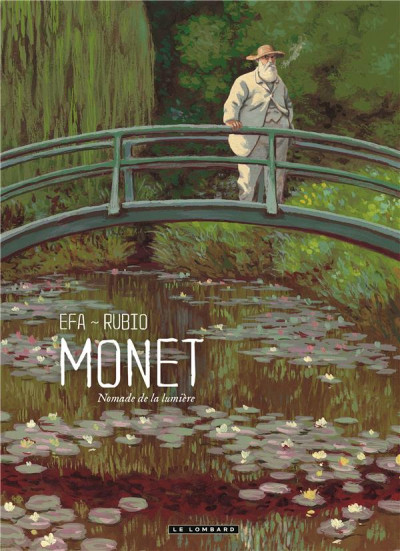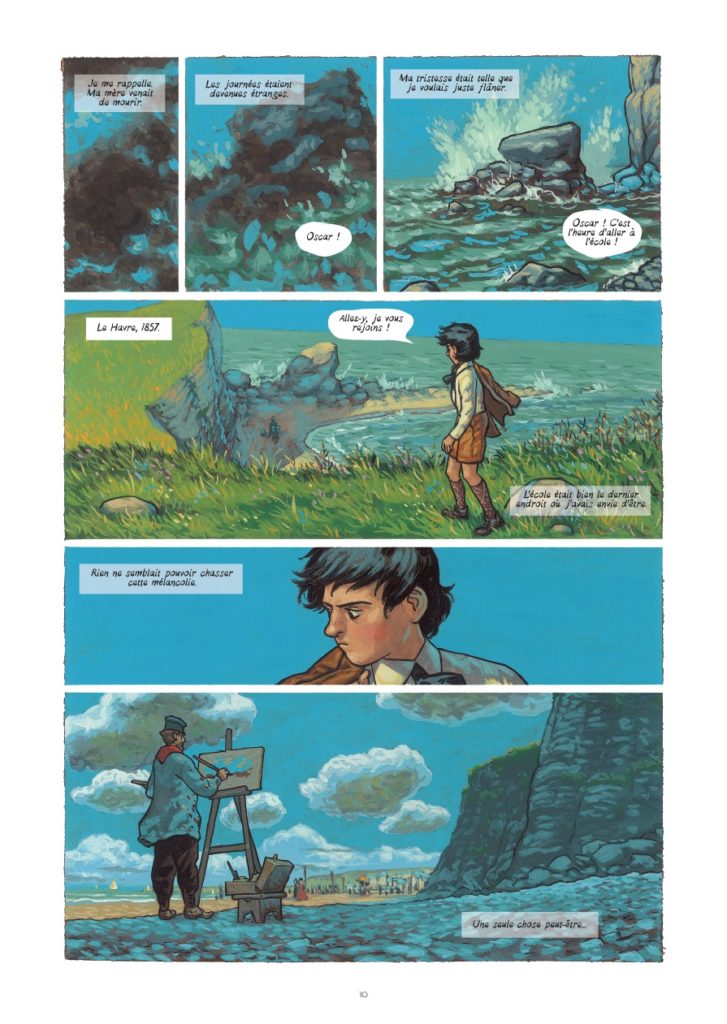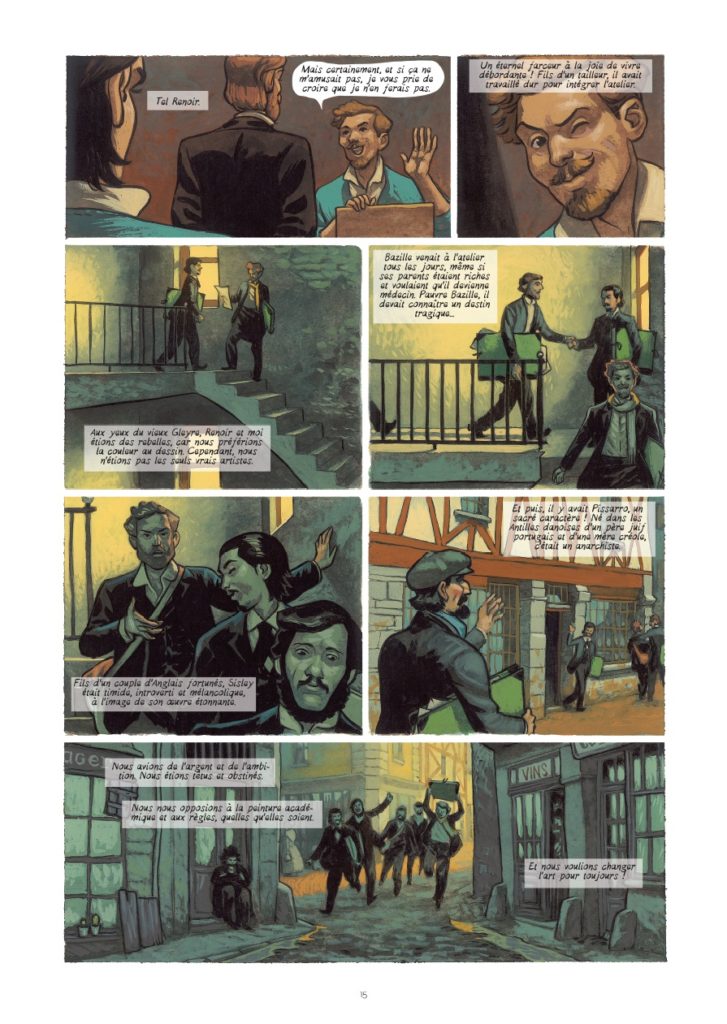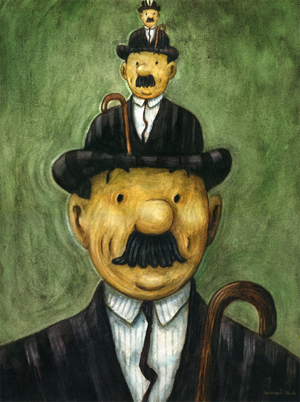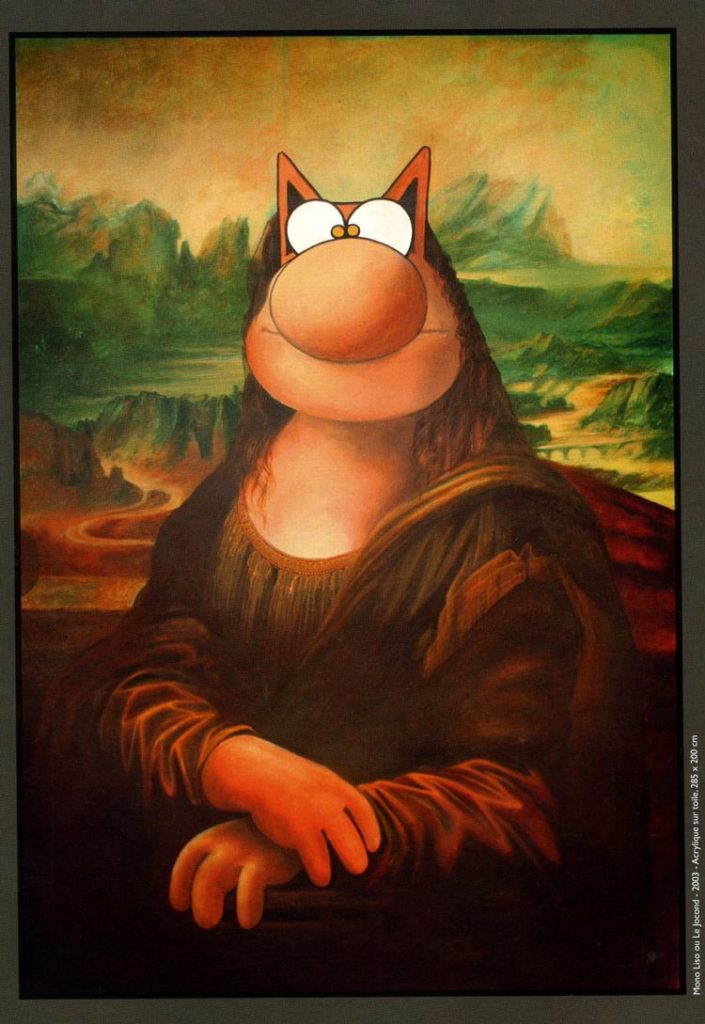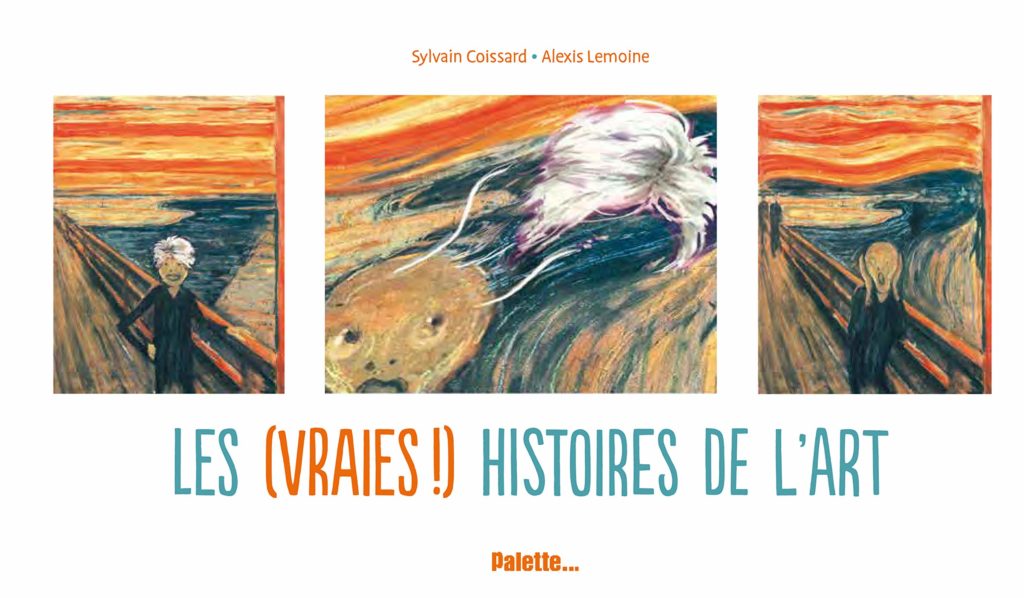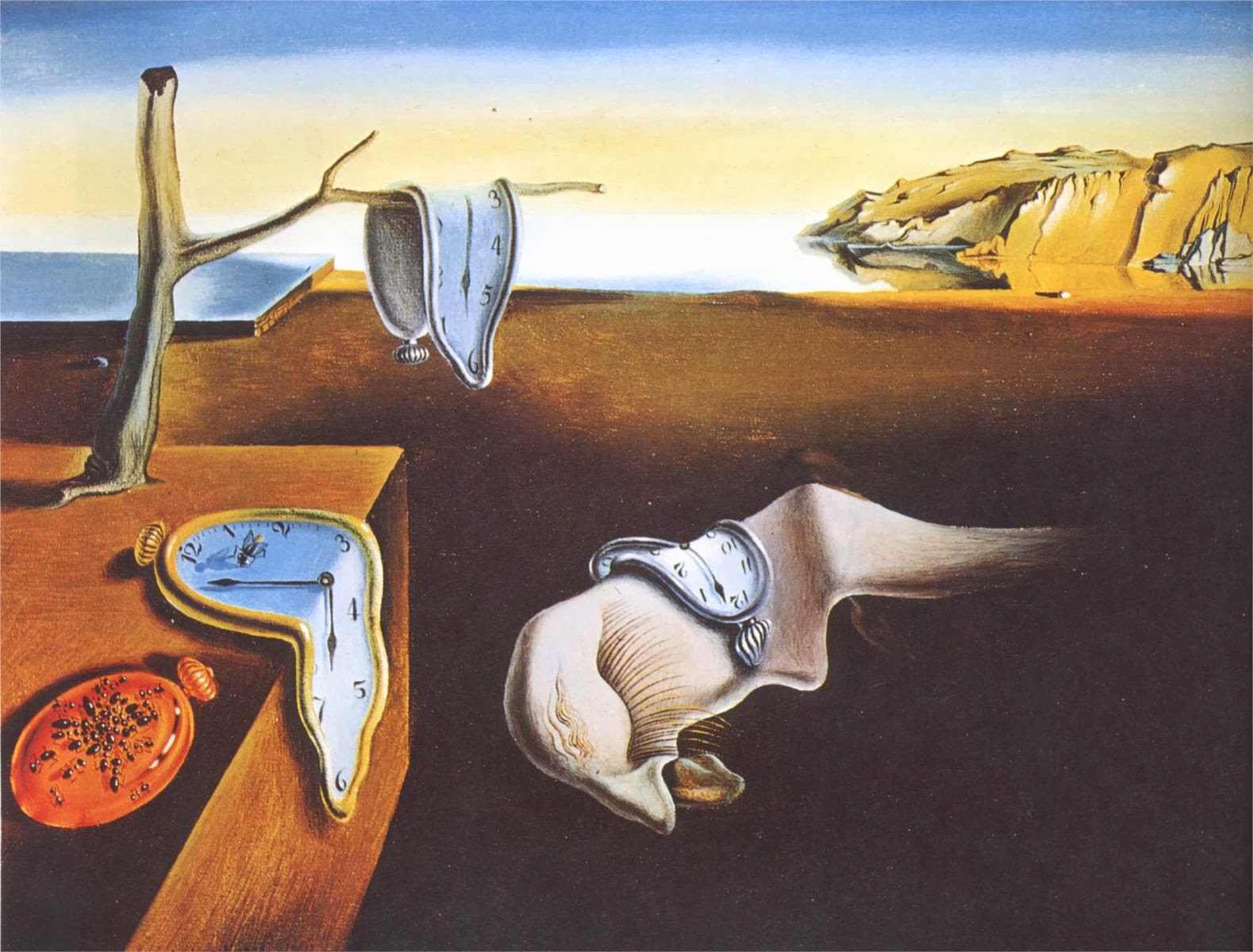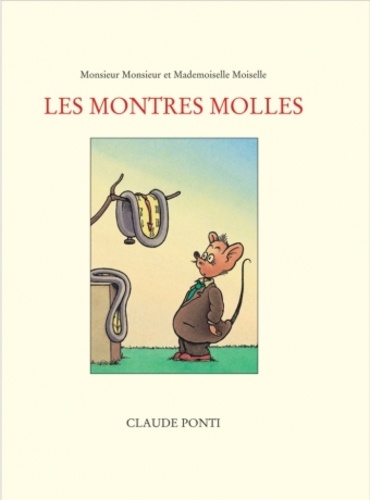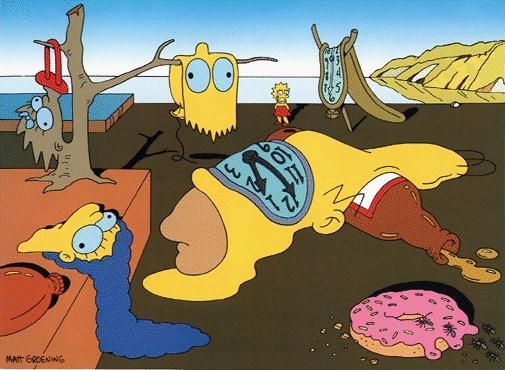Comics & Visuals Arts
The Visual Arts is a (very) broadly defined group of artistic practices, including, amongst others, painting, photography, decorative arts, and more.
Visual Arts is the medium to which the comic arts are the most clearly linked, both being pictorial mediums. Looking at the history of painting, we can often find sequential elements, one of the essential and defining aspects of the comic book. Paintings in the Middle Ages were often constructed in the form of brief scenes or sequences which told stories from the Bible. This narrative tradition continued in some of the most well-known works of visual art in the world, such as Michelangelo’s painted ceiling of the Sistine Chapel, and the vast scenes of the Last Judgement found in the monasteries of Sucevita and Voronet in Romania.
Comic Books: Just Another Element of the Visual Arts?
The obvious historic and aesthetic connections between comics, painting, and the other visual arts begs the question: Can’t comic books be seen as one more branch of the broader “Visual Arts”? And can’t we see the potential for the “comic arts” to influence how we see works in more traditional mediums? A series of paintings or photographs can be seen as a sort of comic strip, with each piece standing in for an individual panel. On the other side of the equation, it has become clear that a page of comics can and should be considered as a legitimate work of art, as worthy of being framed and displayed in a gallery or museum as a painting. It is no longer uncommon to see comic books and original art sold for high prices at top auction houses. The humble comic strip is appraised, framed, and stored away as an investment, gaining a level of respect and appreciation, but detached from its original context, losing the playful elements that it was originally celebrated for.
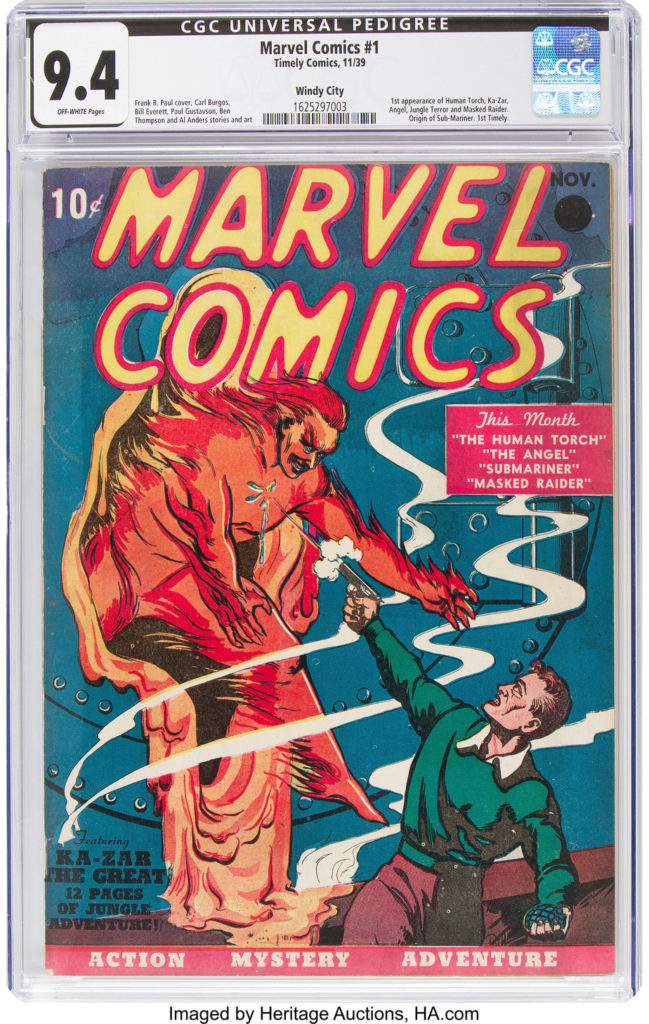
On the other hand, perhaps this sense of playfulness has finally found a place in the halls of the museum, thanks in large part to the influence of the comic arts. After all, today you can find a museum of Art Ludique in Paris dedicated to comics, cinema, animation, and more. As a matter of fact the first Marvels Comics (on the left) was auctioned at 1,66 million of canadian dollars by Heritage Auctions.
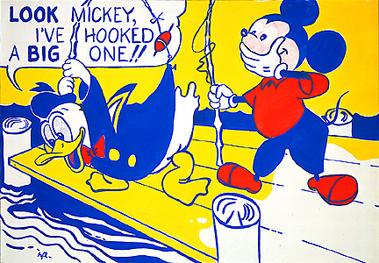
Many visual artists have directly brought the tropes and codes of the comic book into their work, most obviously Roy Lichtenstein, who “reappropriated” images from comic strips, recreating them on a grand scale, from the heroines of romance comics to familiar figures such as Mickey Mouse and Donald Duck. Less well-known is the influence of comic strips on Pablo Picasso. One ot the artist’s earliest political works, Songe et Mensonge de Franco (1937, National Gallery of Canada) is made up of 18 small panels and has a strong narrative element.
The Collective Imagination
The potential for the mixing of newer and older forms of visual art has led to an ever-increasing richness in our “collective Imagination,” with artwork incorporating elements from painting, comics, and more; such as the work of Samuel Stento, whose paintings incorporate the influences of both Hergé and his fellow belgian Rene Magritte. Other creators have introduced elements of sequentiality, and narrative to iconic works. The cartoonist Bosc introduced an element of cheeky humor in his version of l’Angélus by Jean-François Millet, published in Paris Match in 1964, and more recently Sylvain Coissard and his artistic collaborators have continued this tradition in two volumes of The (True!) History of Art (2012 & 2014, Pallette).
We can also think that it is partly thanks to comics that certain pictorial works have entered the collective imagination. The comic strip is the heir to caricature, a genre very much in vogue in the 19th century which used and abused it in the newspapers, among other things to criticize and make fun of abstract art. By making it a recurring gag, the comic helped to anchor its works in the collective imagination.
Want to know more?
- Tom Thompson, esquisses du printemps, Sandrine Revel (2019, Dargaud)
- La ligne de front, Manu Larcenet (2004, Dargaud)
- Castello, André-Philippe Côté (1993, Fallardeau)

